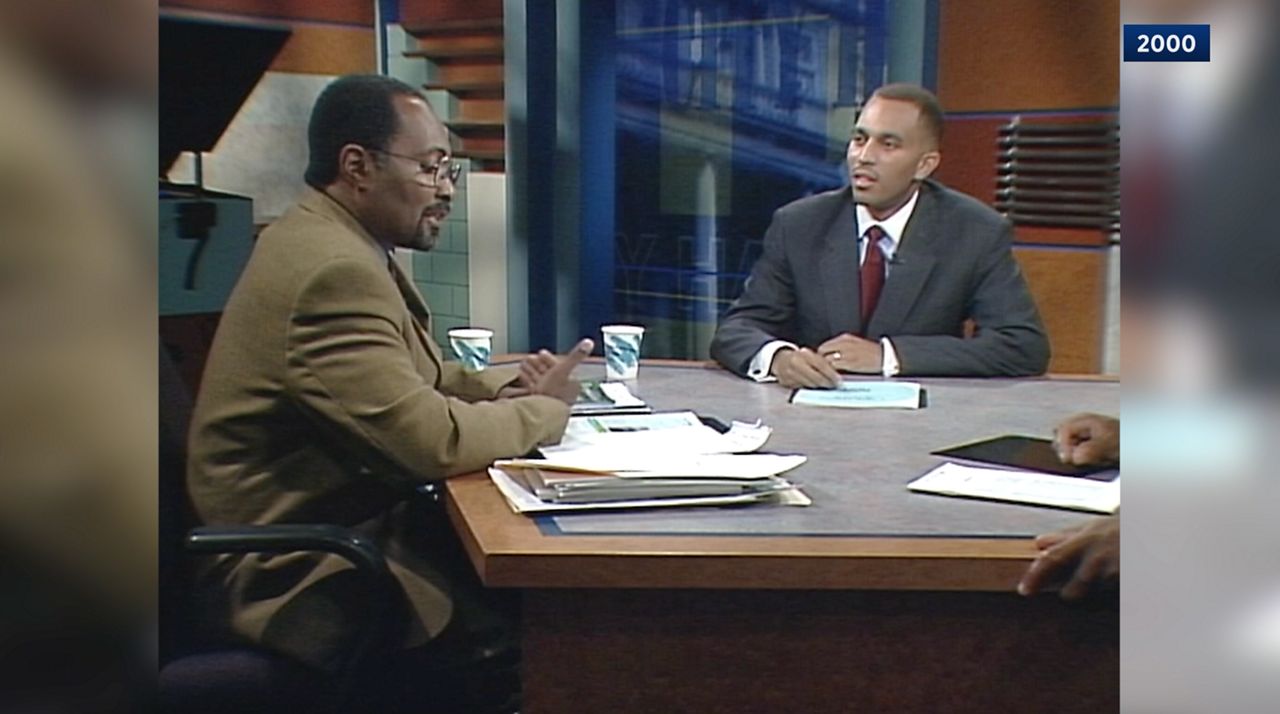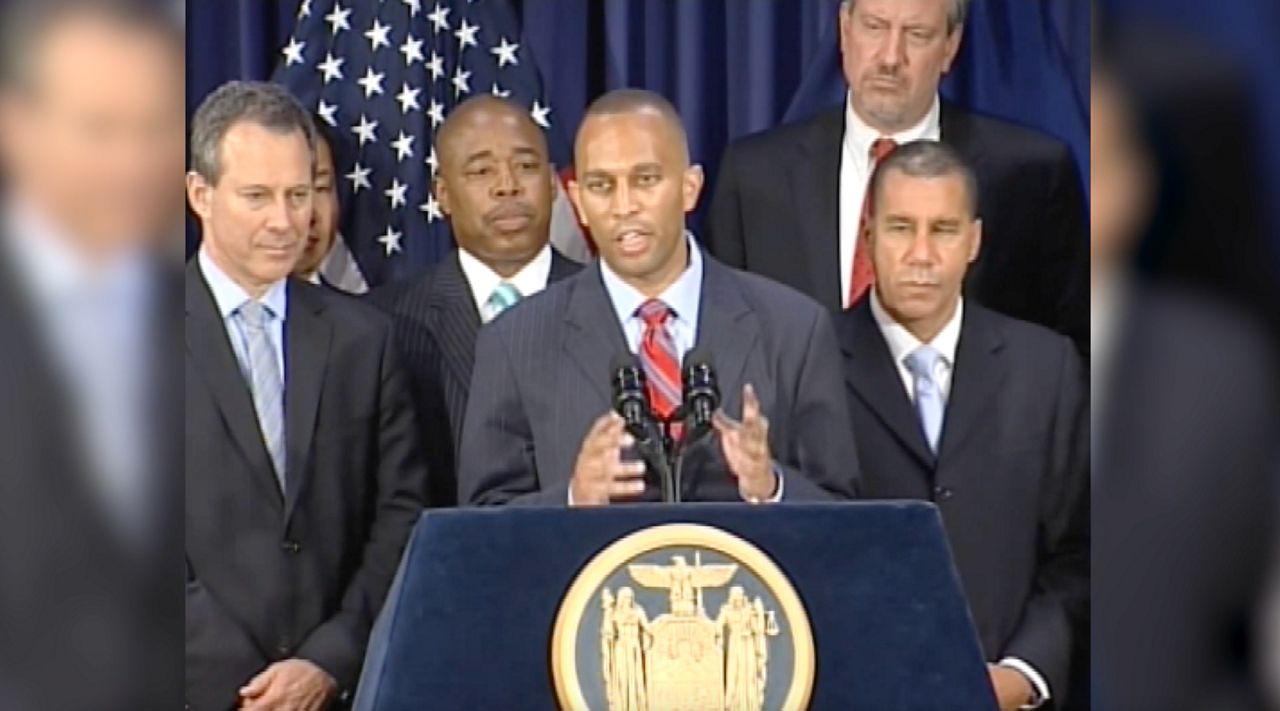Hakeem Jeffries has enjoyed a meteoric rise in Congress, vaulting from freshman backbencher to House Democratic leader in 10 short years.
His ascension to the top role is historic: he is the first Black person to lead a major party in Congress.
But despite his rapid rise, his initial plunge into politics was anything but promising. Jeffries would experience two primary losses before finally clinching an electoral win.
What You Need To Know
- Hakeem Jeffries first bids for public office proved unsucessful, twice running against a longtime incumbent in the Assembly
- When a state Assembly seat opened up in 2006, Jeffries ran again and this time won.
- After six years in Albany, he then launched a successful bid for Congress in 2012
- In Congress, Jeffries climbed the Democratic leadership ladder. He served four years as chair of the House Democratic Caucus, before being elected to replace Nancy Pelosi
Initial losses, before success
When Jeffries first made a bid for the state Assembly in 2000, he was a corporate lawyer looking to make a move.
He twice ran primary campaigns against longtime Assemblymember Roger Green of Brooklyn — the first when he was just 29 years old.

Jeffries argued Green was no longer responsive to his constituents, calling him “out of touch” in an appearance on NY1 in 2000.
Reflecting back, Green said he thought Jeffries was “very good” for a first-time candidate.
“I had other primaries in the past. But no one was as prepared as Hakeem was, you know. There was no performance art,” he said. “He’d never throw any cheap shots. It was always about public policy.”
Green survived both challenges, but said Jeffries left an impression.
“After one of the campaigns, we said, ‘we need to sit down and take account of the critique that he raised against us,’” he said, recalling a conversation with his chief of staff. “We pulled the staff together. And I think as a result of that, he made me stronger.”
When an Assembly seat opened in 2006, Jeffries ran a third time and won. He would go on to be re-elected to the state assembly two times.
“It’s important to be able to learn from that experience, be knocked down, but not necessarily be knocked out,” he said in an interview earlier this month.
In Albany, allies said he was a must-watch during floor debates.
Now-Assembly Speaker Carl Heastie bonded with Jeffries over their shared love of hip hop.
“Sometimes people have that ‘It’ factor. You know, Hakeem just has that ‘It’ factor,” the Bronx Democrat said.
Manhattan Assemblymember Daniel O’Donnell remembers Jeffries being supportive when O’Donnell hit an awkward patch in his career.
O’Donnell said Jeffries is the same person behind the scenes when the lights are not shining.
“He’s the same. And that’s the gift,” he said.

Move to Washington
In 2012, Jeffries saw another opportunity, setting his sights on Congress and once again mounting an insurgent campaign, this time taking on another longtime incumbent: 30-year Rep. Ed Towns.
Towns bowed out, but endorsed Jeffries’ Democratic primary opponent, firebrand Councilmember Charles Barron.
Towns, in an interview in December, said he did not like that the Brooklyn Democratic chair was backing Jeffries.
“As long as you’re supported by Vito Lopez, I will not support you, in spite of all the things that I think that you can bring to the district and what you’d be able to do,” Towns said, recalling a conversation with Jeffries.
Jeffries easily won the primary and the November general election.
Once on Capitol Hill, he landed a seat on the high-profile House Judiciary Committee, where he advocated for reforming the criminal justice system and modernizing copyright laws.
Republican Bob Goodlatte chaired the committee at the time.
“I always found that he was someone that you could disagree with without getting into a disagreeable situation, if you will,” the Virginia congressman remembered.
In 2020, House Speaker Nancy Pelosi gave Jeffries a high-profile role on the national stage, naming him a manager in the first impeachment trial of President Donald Trump. The assignment solidified Jeffries’s standing as a congressman to watch.
Climbing the leadership ladder
At the same time, Jeffries was climbing the leadership ladder, starting as a co-chair of the Democrats’ messaging arm before winning a tight race for caucus chair, succeeding Joe Crowley of Queens — who failed to win reelection to Congress.
These roles allowed Jeffries to bond with members across the diverse caucus, so when Nancy Pelosi announced in November she would step away from leadership to make way for a new generation, Jeffries was ready.
He was elected to replace her unopposed.
“People seem to be surprised about the smoothness of this transition. But there’s nothing surprising about it that it was all laid in place. And there was never any question about it,” said Rep. Jim Clyburn, who previously served as one of the top three Democrats in the House for more than a decade.
Back home in Brooklyn, former Rep. Towns is impressed by Jeffries’ rise — even moreso, he said, due to the seniority system that is so important in Congress.
“For him to be able to climb over folks that have been there 20 years, 25 years and to be able to accomplish this goal, that is not easy,” Towns said.
And yet Jeffries had done it, paving a historic path from working class Brooklyn to congressional leader, positioning himself to become speaker if Democrats take back the House.
This story is the second part of a four-part series, tracking Jeffries’ path to power. The first story on Jeffries’ Brooklyn roots can be found here. The third part on Jefferies' push to reform the criminal justice system can be found here. The fourth part on Jefferies’ leadership style and potential challenges ahead can be found here.



